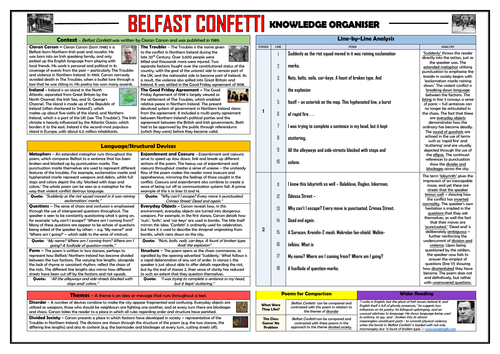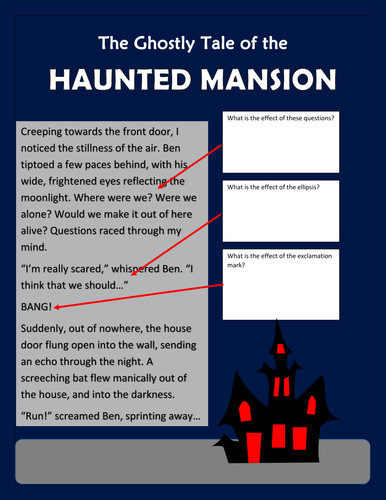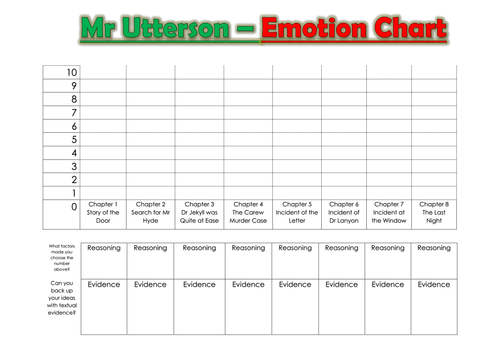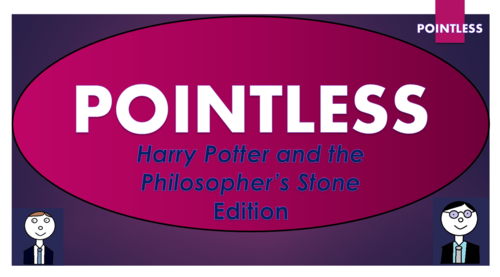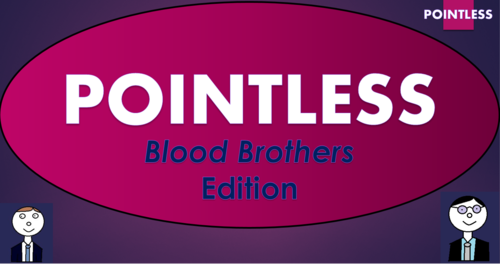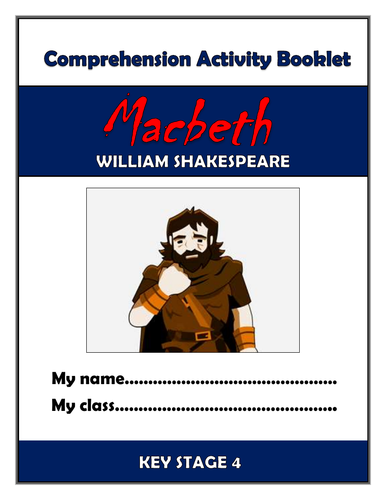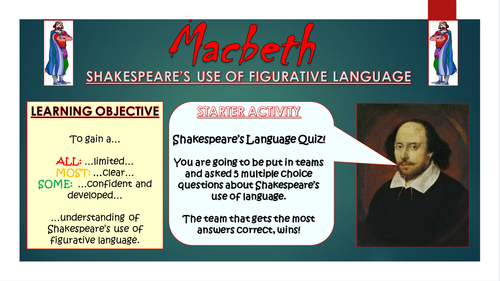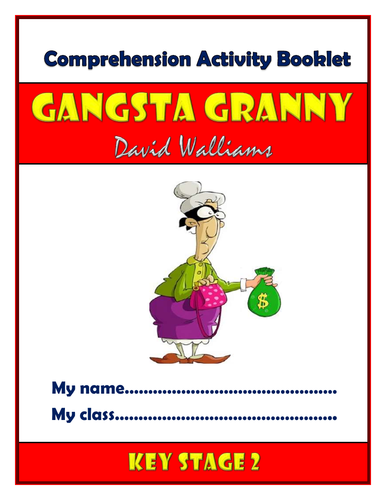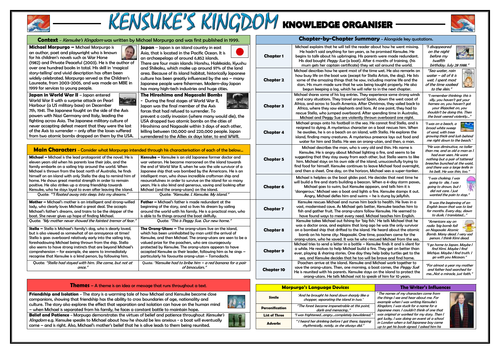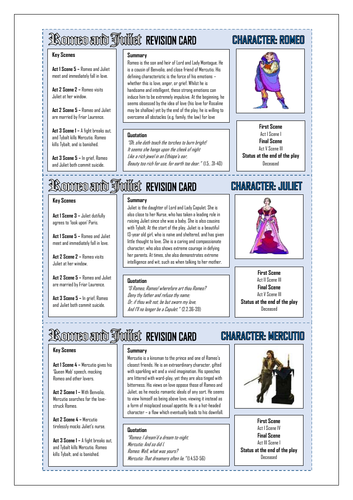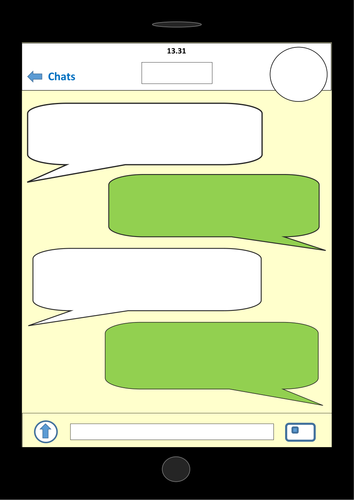
3k+Uploads
1972k+Views
2284k+Downloads
English language arts

Belfast Confetti Knowledge Organiser/ Revision Mat!
This detailed and visually-appealing resource offers a complete reference point for students learning or revising Ciaran Carson’s power and conflict poem 'Belfast Confetti.’ It contains comprehensive sections on:
Context;
Line-by-Line Analysis;
Poetic Devices/ Language Devices;
Themes;
Form/Structure;
Poems for Comparison;
The Poet’s Influences.
Key words and ideas are underlined for easy reference. The resource is designed to be printed onto A3, and is provided as both a PDF and a Word version (so that you can edit if you want to). All images used are licensed for commercial use and are cited on a separate document (included).

Ellipses, Question Marks, and Exclamation Marks!
This interesting and engaging lesson enables students to understand what ellipses, question marks, and exclamation marks indicate, and determine where they should be used. They also learn to understand the effect of these punctuation forms in writing, and develop the skills to use these punctuation forms accurately in my own writing.
Over the course of their learning journey, students:
- Define and exemplify what ellipses, question marks, and exclamation marks are;
- Identify where these punctuation marks should be placed in writing;
- Correctly place ellipses, question marks, and exclamation marks into unpunctuated sentences;
- Analyse the effect of these punctuation marks upon sentences and wider texts;
- Use ellipses, question marks, and exclamation marks accurately and with subtlety in their own writing;
- Peer and self assess each other's writing attempts.
The resources include:
-Visually engaging whole-lesson PowerPoint;
-Placing Punctuation worksheet (and teacher answer sheet);
-A model example of an ellipsis, question mark, and exclamation mark-filled piece of writing for analysis;
-Helpful and comprehensive step-by-step lesson plan.
All images are licensed for commercial use, and are cited on the final page of the slide.

Dr Jekyll and Mr Hyde: Mr Utterson!
This engaging and informative lesson enables students to make sustained and insightful interpretations of the way in which the character of Utterson is presented and developed throughout ‘Strange Case of Dr Jekyll and Mr Hyde.’ In particular, students analyse how the Utterson’s calm and rational demeanour is tested through the strange and tragic events in the novella.
The lesson follows a step-by-step learning journey, in which children learn through:
- Establishing how the key characteristics of Mr Utterson;
- Reading and comprehending key extracts describing Mr Utterson in the text;
- Analysing how Utterson's character is developed through events in the text;
- Empathising with Utterson's character and establishing his viewpoints;
- Peer assessing each other's learning attempts.
Included is:
- Whole lesson PowerPoint - colourful and comprehensive;
- Selected extracts from the text describing Utterson;
- Utterson Emotion Graph for the development task;
- Analysis template with success criteria for creating well-structured responses;
- Comprehensive lesson plan.
There are also opportunities for group learning, peer assessment, and whole class discussion. These resources were originally taught to GCSE students, but with subtle adaptations they have also been used with KS3 and A Level Students.
All images are licensed for commercial use, and image rights are listed on the last page of the presentation.

Harry Potter and the Philosopher's Stone Pointless Game!
Based on the popular game show 'Pointless', this resource is perfect for use as a whole lesson resource, enrichment option, or revision tool. Editable, so that you can change to any other topic or change questions. (I've also added a blank template so that you can make your own games from scratch). Containing almost 30 slides of sound clips and suitably challenging questions, this resource is effective at both promoting engagement and enhancing learning. There are several full rounds of questions to build or revisit knowledge of characters, plot, and themes in 'Harry Potter and the Philosopher's Stone.'
Round 1. The characters in Harry Potter and the Philosopher's Stone
Round 2. Quotations from the text
Round 3. Settings and Objects
Round 4. Themes in Harry Potter and the Philosopher's Stone
The nature of this game ensures that the resource can challenge students of all levels.
A blank template has also been added, so that you can create your own games!

Formal Letter Writing!
This stimulating and informative lesson develops students’ skills in creating formal letters that precisely meet the content, language and structural features of the form. In particular, they gain an in-depth understanding of how formal letters should be set out on the page, what information should be included within them, and what style they should be written in, in order to meet form, audience and purpose.
Students follow a clear and logical learning journey, in which they:
-Understand when and where formal letters are an appropriate form of communication;
-Unjumble a model example of a formal letter in order to establish its structure;
-Work collaboratively to identify and analyse the content and language features in further model examples of formal letters;
-Create a success criteria for effective formal letters (although a ready-made success criteria is included);
-Write their own formal letters, using a structure strip and helpsheet (if needed) and the techniques that they have learnt;
-Peer/self-assess their writing attempts.
There are enough resources here really for two lessons, including:
-Visually engaging whole-lesson PowerPoint;
-Formal letters x 3 (a complaint, information about a school trip, and a covering letter for a job application)
-Formal letters structure strip;
-Formal letters helpsheet;
-Step-by-step lesson plan.
All images are licensed for commercial use, and are cited on the final page of the slide.

The Prelude (Extract) Knowledge Organiser/ Revision Mat!
This detailed and visually-appealing resource offers a complete reference point for students learning or revising William Wordsworth’s power and conflict poem 'The Prelude.’ It contains comprehensive sections on:
Context;
Line-by-Line Analysis;
Poetic Devices/ Language Devices;
Themes;
Form/Structure;
Poems for Comparison;
The Poet’s Influences.
Key words and ideas are underlined for easy reference. The resource is designed to be printed onto A3, and is provided as both a PDF and a Word version (so that you can edit if you want to). All images used are licensed for commercial use and are cited on a separate document (included).

Dr Jekyll and Mr Hyde Knowledge Organiser/ Revision Mat!
This detailed and visually-appealing resource offers a complete reference point for students learning or revising Robert Louis Stevenson's 'Strange Case of Dr Jekyll and Mr Hyde.' It contains comprehensive sections on:
- Context;
- Chapter by Chapter Summary (with quotes);
- Main Characters;
- Themes;
- Stevenson's Language Devices;
- Gothic Features.
Key words and ideas are underlined for easy reference. The resource is designed to be printed onto A3, and is provided as both a PDF and a Word version (so that you can edit if you want to). All images used are licensed for commercial use and are cited on a separate document (included).

Holes - The Warden!
This engaging and informative lesson enables students to understand the character of the Warden from Louis Sachar's 'Holes', making insightful comments about her character based upon her actions, and backing these ideas up with reference to evidence from the text.
The lesson follows a step-by-step learning journey, in which children learn through:
- Reading and understanding the selected extracts to determine the key traits of The Warden's character at different points in the text;
- Noticing trends in Warden's character throughout the text, observing how she develops from her introduction in the text to later on in the story;
- Analysing Sachar's use of language and description in describing the Warden;
- Peer assessing each other's learning attempts;
- Creating their own villainous Warden, using an engaging template.
Included is:
- Whole lesson PowerPoint - colourful and comprehensive;
- Selected extract- Chapter 14;
- Development of The Warden worksheet (Word and PDF)
- Analysis template with success criteria for creating well-structured responses;
- Create your own villain template
- Comprehensive lesson plan.
There are also opportunities for group learning, peer assessment, and whole class discussion. I originally used these resources with year 7 and 8 classes, however colleagues have used them for between years 4 and 9 with minimal adaptations.
All images are licensed for commercial use, and image rights are listed on the last page of the presentation.
Bundle

Recount, Diary, and Autobiographical Writing!
These engaging and detailed resources have been designed to make the learning of Recount, Diary, and Autobiography writing forms easily accessible, engaging and interesting for all children. Throughout each lesson, students learn to improve their skill at using appropriate, concise, and precise spelling, punctuation, and grammar, and practice employing them within their own writing compositions. Each lesson contains a comprehensive whole lesson PowerPoint, all the resources that you will need, and a lesson plan.
The pack also includes a literacy writing mat to help students build their extended writing skills.
All images are licensed for commercial use, and are cited on the final slide of the PowerPoint/ the bottom of worksheets.

Blood Brothers Pointless Game!
Based on the popular game show ‘Pointless,’ this resource is perfect for use as a whole lesson resource, enrichment option, or revision tool. Editable, so that you can change to any other topic or change questions. (I’ve also added a blank template so that you can make your own games from scratch). Containing almost 30 slides of sound clips, engaging visuals, and suitably challenging questions, this resource is effective at both promoting engagement and enhancing learning. There are several full rounds of questions to build or revisit knowledge of characters, plot, and themes in ‘Blood Brothers.’
Round 1. The characters in Blood Brothers
Round 2. Quotations from the text
Round 3. Settings and Objects
Round 4. Themes in Blood Brothers
The nature of this game ensures that the resource can challenge students of all levels.
A blank template has also been added, so that you can create your own games!

Macbeth Comprehension Activities Booklet!
This resource booklet contains a wide range of age-appropriate, engaging, and meaningful comprehension activities for use throughout the reading of William Shakespeare’s ‘Macbeth.’ Teachers have found them particularly useful in exam revision, comprehension tasks, or guided reading sessions. They are perfect for aiding the progress of students towards meeting the KS4 expectations within the new National Curriculum framework - this makes the tasks suitable for all examining bodies. Students have found these resources extremely engaging, and for teachers there is explicit information within each task regarding which comprehension strands the task is designed to demonstrate. They also relate to key extracts, characters, and themes from the story, ensuring that students gain a deep understanding of the play.
Activities within the booklet include:
- ‘Context: Shakespearean Britain’ - to aid students with ‘Drawing on knowledge of the purpose, audience and context of the writing, including its social, historical and cultural context and the literary tradition to which it belongs, to inform evaluation;’
- ‘Shakespeare’s Description’ - to aid students with ‘Analysing a writer’s choice of vocabulary, form, grammatical and structural features, and evaluating their effectiveness and impact;’
- ‘Lady Macbeth’ - to aid students with ‘Seeking evidence in the text to support a point of view, including justifying inferences with evidence;’
- ‘Editing the Play’ - to aid students with ‘Making an informed personal response, recognising that other responses to a text are possible and evaluating these.’
Plus many, many more activities (the booklet is around 30 pages in length!) I’ve also added it as a PDF in case the formatting differs on your computer.
All images are licensed for commercial use, and are cited on a separate document (included).

Never Let Me Go - The Dystopian Novel!
This engaging and informative lesson enables students to understand how ‘Never Let Me Go’ fits the form of a dystopian novel. In particular, students develop their understanding of the key features of dystopian texts, before identifying and explaining where these are prevalent in the novel. Subsequent to this, they consider the messages that Ishiguro aims to get across through his dystopian features, before designing their own dystopian story plans.
The lesson follows a step-by-step learning journey, in which children learn through:
Defining utopias and dystopias, and gaining an understanding of their key features;
Finding the features of dystopias within the text, using relevant and precise textual evidence;
Reflecting on Ishiguro’s key meanings and ideas behind his dystopia, through watching and reading his interviews, and answering comprehension questions;
Using their deep understanding of dystopian texts to create their own dystopian story plan;
Peer assessing each others’ learning attempts.
Included is:
Whole lesson PowerPoint - colourful and comprehensive;
‘Features of Dystopia in Never Let Me Go’ worksheet;
Interviews with Kazuo Ishiguro (video link and printed extract);
Dystopian story plan template
Comprehensive lesson plan.
There are also opportunities for group learning, speaking and listening, peer assessment, and whole class discussion. I originally used these resources with year 10 and 11 classes, however colleagues have used them for between year 9 and year 13 with some adaptations.
All images are licensed for commercial use, and image rights are listed on the last page of the presentation.

Macbeth: Shakespeare's Figurative Language!
This interesting and stimulating lesson aims to improve students’ understanding of Shakespeare’s use of figurative language in Macbeth, focusing particularly on similes, metaphors, personification, hyperbole, and euphemisms. Students learn to analyse the intended effect of these devices through a close-reading and interpretation of Act 5 Scene 1: The sleepwalking scene involving Lady Macbeth.
The lesson utilises a range of tasks, that require students to be visual and interactive learners. It follows this learning journey:
- Defining the key term 'figurative language' and establishing its importance as a literary technique;
- Defining and exemplifying each of the key terms 'simile, metaphor, personification, hyperbole, and euphemisms through collaborative group opportunities;
- Understanding how and why figurative language is used to add depth to writers' ideas;
- Reading and interpreting Act 5 Scene 1, and establishing how figurative language impacts upon the scene;
- Reflecting upon why this may/ what effect this may have had on audiences at the time;
- Summarising the events of the scene;
- Peer/self evaluating the learning in the lesson.
Included in this resource pack are:
- A well-presented, thorough, and informative, whole-lesson PowerPoint presentation;
- Resources for the reading and interpreting activity - full scene transcript with space for notes;
- A template to help scaffold the main task, complete with P.E.E instructions;
- Cards for the card sorting group activity
- A comprehensive teacher guidance form/lesson plan to assist delivery.
All images in this resource are licensed for commercial use, and are cited on the final slide of the lesson presentation.

Gangsta Granny KS2 Comprehension Activities Booklet!
This resource booklet contains a wide range of age-appropriate and engaging comprehension activities for use throughout the reading of David Walliams’ ‘Gangsta Granny.’ Teachers have found them particularly useful in comprehension or guided reading sessions. They are perfect for aiding the progress of children towards meeting the upper KS2 expectations within the new National Curriculum framework. Children love learning from these resources, whilst they are also of great use to teachers, as there is explicit information within each task regarding which comprehension strands the task is designed to demonstrate. They also relate to key extracts, characters, and themes from the story, ensuring that children gain a deep understanding of the text.
Activities within the booklet include:
‘An Interview with Granny’ - to enable students to demonstrate that they can: ‘Understand what is read by drawing on information from more than one paragraph, identifying key details that support the main ideas, and using quotations for illustration;’
‘Walliams’ Description’ - to enable students to demonstrate that they can: ‘Explain meanings of words that they know and ask the meaning of new words. Link the meaning of new words to words that they already know;’
‘Mr Parker Character Profile!’ - to enable students to demonstrate that they can: ‘Understand what is read by drawing on information from more than one paragraph, identifying key details that support the main ideas, and using quotations for illustration;’
‘Figurative Language in Gangsta Granny’ - to enable students to demonstrate that they can: ‘Discuss and evaluate how authors use language, including figurative language, to create an impact on the reader.’
Plus many, many more activities (the booklet is 21 pages in length!) I’ve also added it as a PDF in case the formatting differs on your computer.
All images are licensed for commercial use, and are cited on a separate document (included).

Kensuke's Kingdom Knowledge Organiser/ Revision Mat!
This detailed and visually-appealing resource offers a complete reference point for students learning or revising Michael Morpugo’s ‘Kensuke’s Kingdom.’ It contains comprehensive sections on:
Context;
Chapter by Chapter Summary (with quotes);
Main Characters;
Themes;
Morpurgo’s Language Devices;
Influences on the Writer.
Key words and ideas are underlined for easy reference. The resource is designed to be printed onto A3, and is provided as both a PDF and a Word version (so that you can edit if you want to). All images used are licensed for commercial use and are cited on a separate document (included).

War Horse KS3 Comprehension Activities Booklet!
This resource booklet contains a wide range of age-appropriate, engaging, and meaningful comprehension activities for use throughout the reading of Michael Morpugo’s ‘War Horse.’ Teachers have found them particularly useful in comprehension or guided reading sessions. They are perfect for aiding the progress of children towards meeting the KS3 expectations within the new National Curriculum framework. Children have found these resources extremely engaging, and for teachers there is explicit information within each task regarding which comprehension strands the task is designed to demonstrate. They also relate to key extracts, characters, and themes from the story, ensuring that children gain a deep understanding of the text.
Activities within the booklet include:
‘Context: World War I’ - to enable students to demonstrate that they can: ‘Know the purpose, audience and context of the writing and drawing on this knowledge to support comprehension.’
‘Morpugo’s Description’ - to enable students to demonstrate that they can: ‘Know how language, including figurative language, vocabulary choice, grammar, text structure and organisational features, present meaning.’
‘Captain Nicholls Character Profile’ - to enable students to demonstrate that they can: ‘Study setting, plot, and characterisation, and the effects of these.’
‘Vocabulary Inspector’ - to enable students to demonstrate that they can: ‘Learn new vocabulary, relating it explicitly to known vocabulary and understanding it with the help of context and dictionaries.’
Plus many, many more activities (the booklet is 23 pages in length!) I’ve also added it as a PDF in case the formatting differs on your computer.
All images are licensed for commercial use, and are cited on a separate document (included).

Romeo and Juliet Revision Cards!
These colourful, comprehensive, and well-structured revision cards have been creatively designed for students securing their understanding of William Shakespeare’s tragedy ‘Romeo and Juliet.’ Each card is visually-appealing and highly-detailed, covering aspects of each feature including a full summary, cited quotations from the play, definitions/ examples, and a consideration of audience reactions. They are tried and tested, with teachers incorporating them in revision games, using them as essay writing aids, or utilising them as home revision aids. They are provided as both PDFs (to prevent formatting issues between computers) and as Word documents (for easy editing).
The revision cards included in this pack are:
Characters - Romeo, Juliet, Mercutio, Friar Laurence, The Nurse, Tybalt;
Context - William Shakespeare, Patriarchal Society, Religion;
Devices - Dramatic Irony, Soliloquies, Dramatic Tension;
Scenes - Act 1 Scene 5 (The Masquerade Ball Scene), Act 2 Scene 2 (Juliet’s Window Scene), Act 3 Scene 1 (The Death of Mercutio/ Tybalt Fight Scene);
Themes - Love, Hatred, Fate and Free Will.
For any questions or comments, please contact TandLGuru@yahoo.co.uk - Many thanks!

Julius Caesar - William Shakespeare - Understanding Historical Context!
This engaging and informative lesson aims to improve students’ understanding of the context of William Shakespeare’s Julius Caesar. Some of the primary areas of the historical context that are explored are William Shakespeare himself, life at the end of the Elizabethan era, and the life and times of Julius Caesar (and the parallels between the Roman and Elizabethan periods).
Through the comprehensive slideshow, learners are guided on the following learning journey:
Understanding who William Shakespeare was, and remembering key details about his life;
Identifying words and phrases that he coined that are still in use today;
Understanding the events and prevailing ideas in existence at the end of Elizabeth I’s reign;
Taking part in a quiz about the some of the basic key events and ideas of the time;
Researching the key events of Julius Caesar’s life (particularly the parts pertinent to the play, e.g. his assassination, his acquaintances, etc.);
Utilising speaking and listening skills in order to communicate gathered knowledge, and obtain knowledge from others.
Evaluating the learning in the lesson.
The lesson includes a colourful and detailed PowerPoint presentation, and the well-structured research template - provided in both Word (to allow editing) and PDF (to protect formatting) versions.
All images in this resource are licensed for commercial use, and are cited on the final slide of the lesson presentation.

Prepositions and Prepositional Phrases!
This interesting and engaging lesson (there are actually enough resources to fill 2-3 lessons here) enables students to learn a range of different prepositions, to use different prepositions in their writing, and to understand and use prepositional phrases. In particular, students become familiar with the importance of prepositions and prepositional phrases in a wide range of writing, through a number of fun and interactive tasks.
Throughout the lesson, students learn to:
- Define and exemplify prepositions;
- Secure their understanding of different types of prepositions;
- Identify prepositions in writing and analyse their effect;
- Understand what prepositional phrases are, and identify them in writing;
- Accurately use their own prepositions and prepositional phrases;
- Peer/ self assess their partners/ their own prepositions and prepositional phrases.
The resources include:
-Visually engaging and comprehensive whole-lesson/s PowerPoint;
-Prepositions worksheet;
-Prepositional Phrases worksheet
-Model Example;
-Step-by-step lesson plan.
All images are licensed for commercial use, and are cited on the final page of the slide.

Templates for Writing Forms (Social Media, Messaging, Newspapers and more!)
Perfect for enhancing writing tasks, these writing forms templates are perfect for helping to relate to students using a variety of writing forms that they are familiar with. Visually engaging and accurate, these templates can be used across the curriculum, enriching students' writing experiences whilst simultaneously proving their knowledge of texts, characters, key skills, and other learning.
Included:
- Social media page template
- Tabloid newspaper template
- Broadsheet newspaper template
- Online blogger template
- Email template
- Whatsapp/messenger template
- Postcard template.
Most of these documents can be easily edited to suit your students' needs.
Please note: All pictures are licensed for commercial use, details of authors can be provided upon the request.

